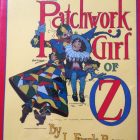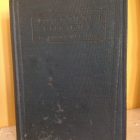How to Charm the Pants Off an Editor with the Power of Your Words
I have to imagine that, within the Ploughshares community, there are just about as many writers as readers: those who love stringing words together, seeing how they taste when they read them back to themselves… Those who continue to look for the best words with which to hit readers in the gut with the greatest possible impact.
And I assume that you yourself are one of these writers—a writer who doesn’t simply write into the void, but who writes to connect with readers.
Assuming I’m correct, you want to give yourself the greatest possible chance of charming editors, eventually making your way to publication. Because the business of writing isn’t just about creating art. It’s about drumming up actual business.
This is where I come in.
I’ve built my writing portfolio up over the past ten-plus years, starting with freebie online bylines and eventually making my way to regional and national print publications. I’ve been on the other side of the desk, as an editor at an online publication, fielding query letters and essay submissions. I’ve even coached beginning freelance writers into landing their first clips.
This post? Consider this a pro bono coaching session.
So once you’ve created the word magic (I also assume you have that part covered), how do you get the byline?
Two simple steps.
1. Do Your Homework
As an editor, a query letter represented many things to me.
It presented a story idea that might or might not work for my publication. It showcased a writer’s writing style, not to mention their ability to match the voice of my publication. It explained to me (or at least tried to) why this particular writer was the best person for the job. But most importantly of all, it made my life easier.
The best way to make an editor’s life easier is to make their decision to publish or not publish a no-brainer. A lot of this comes from showing a familiarity with their publication and with their audience. And to do this, you need to do your homework.
I conduct my own research in a variety of different ways. Often, I find the most valuable information simply by flipping through a magazine. Other times, a publication’s website or media kit has the information I’m seeking. Wherever I find it, I always look for the same bits of crucial information for each publication I’m considering. Put together, these pieces of information help me make my queries as targeted as possible.
So here are some of the things I’m looking for as I flip through my endless piles of magazines:
What is the subject matter? What types of topics do they tend to cover?
Which story formats do they use the most? Personal essays? Reported essays? Research articles? Charts? Listicles?
Do bylines appear throughout the publication? If so, are these bylines distinct from the names on the masthead? This tells me how open they are to using freelancers.
Who is their target audience? (The media kit can be a good source of information for this.)
Do they focus on one geographic location, or are they writing for a wider audience?
What is their lead time? I’ll need to keep this in mind when pitching my story, based upon how timely it is.
What’s their voice? Their tone?
How can I best make my story idea the perfect fit for this publication? Which angle should I take?
2. Make It Obvious That You Did Your Homework
Once you have all of this crucial information in hand (and not a second before), you can start writing your query or submission letter.
First, target a specific editor. Use the publication’s masthead to find the best possible recipient for your letter. Some publications even make it easy on us writers by listing out which editors manage which sections. Depending upon the size of the staff, one editor may handle multiple sections. Track down their email, too, rather than using the general, catch-all submissions email.
Establish a connection with this editor. Perhaps by mentioning a mutual acquaintance (if you’re lucky enough to have one). Perhaps by mentioning a time you saw them speak, or calling out something they themselves once wrote. If all else fails, open with something eye-catching or clever, and establish a news hook for your story, if one exists.
Then lay out your idea. Again, you want to make the editor’s job as easy as possible. So mention a specific section of the publication where you think it might best fit. Suggest possible headlines, and maybe even sidebar ideas (if it’s that type of publication). Mention names of experts you might interview, or statistics you might include. Including details like these helps make your story feel like a natural fit.
Finally, sell the heck out of yourself. You can convince an editor you’re the best writer for the job by showing that you have personal experience with the topic at hand, or by providing expert sources you happen to be connected to in some way.
You should also provide details of your professional experience. If you have an online portfolio, link to it. This shows you have a positive track record, and that an editor can trust you with a deadline. Also, if you’ve written on the same or similar topics in the past, link to those pieces.
And it should go without saying that your query letter should be as well-written as an actual article. If you’re low on clips, this letter will be one of the primary examples of your writing ability, and will also show that you’re able to write in the tone and style of the publication you’re targeting.
Then?
Press send, land that assignment, and roll around in money.
Or if the rates are low, you can always just roll around in those warm, fuzzy feelings you’ll get.



